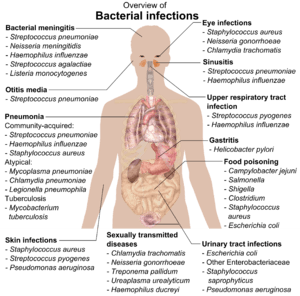Bacteria hiding in the lungs might not be able to hide much longer.
Although traditional tests can take days or weeks to culture to determine the presence of certain harmful bacteria—such as those that cause tuberculosis—a much more rapid technique for detecting lung infections might be on the horizon.
Researchers have developed a test that can detect the presence of common infectious bacteria based just on the breath. The test picks up signature volatile organic compound (VOC)—particles emitted in gasses—profiles that the bacteria produce that are distinct those that the body—or other bacteria—give off. The findings were published online January 10 in the Journal of Breath Research.
The researchers, led by Jiangjiang Zhu of the University of Vermont, conducted the studies in lab mice that were infected with different types of common bacteria: two different strains of Pseudomonas aeruginosa, which can cause pneumonia, and one strain of Staphylococcus aureus, which can cause respiratory infections. The next day, the researchers tested the animals’ breath by ionizing breath samples then shooting them through a mass spectrometer to analyze concentrations of various VOCs in a process called secondary electrospray ionization mass spectrometry (SESI-MS).
The test detected the different bacterial infections as well as differentiated between healthy and infected mice. It also located the difference between the two strains of P. aeruginosa. The researchers call these different VOC signatures a bacteria’s “breathprint.”
“We have strong evidence that we can distinguish between bacteria infections of the lung in mice very effectively using the breathprint SESI-MS approach,” Jane Hill, also of the University of Vermont and study co-author, said in a prepared statement. This technique will have to be tested in large human trials before it makes an appearance in the clinic. But the rapidity of the test is appealing. And it could at least make it a good first step in detecting bacterial infections, with a follow-up culture coming later if deemed necessary—to detect drug-resistant TB, for example.
Read more . . .
via Scientific American – Katherine Harmon
The Latest Streaming News: Detecting Infections updated minute-by-minute
Bookmark this page and come back often
Latest NEWS
Latest VIDEO



